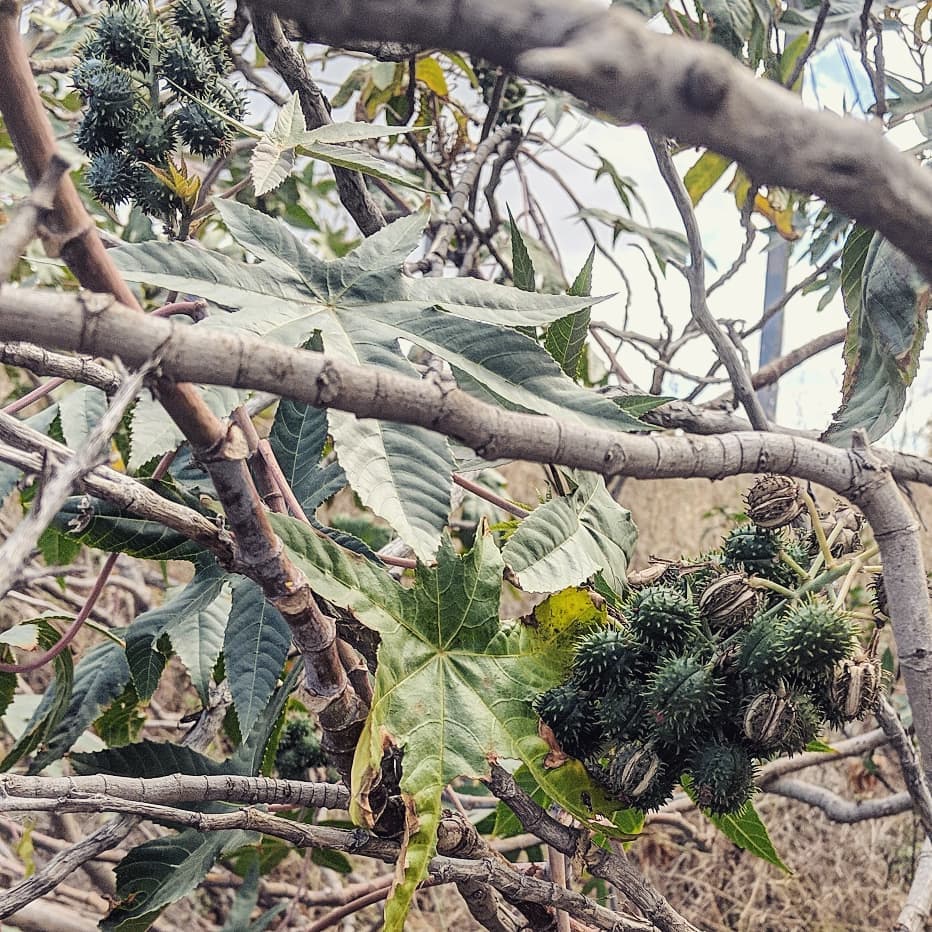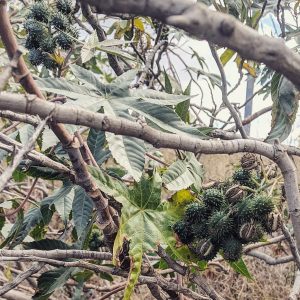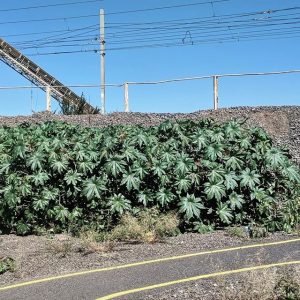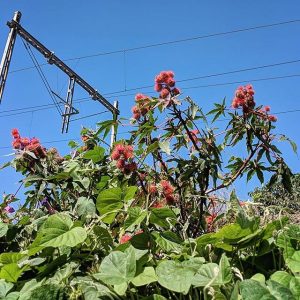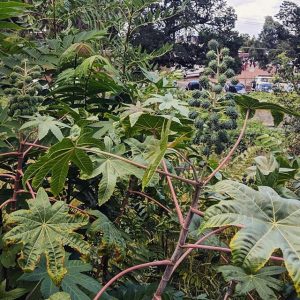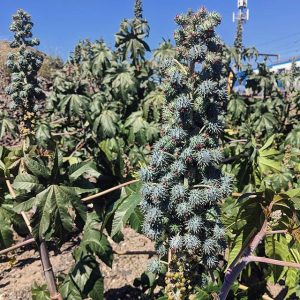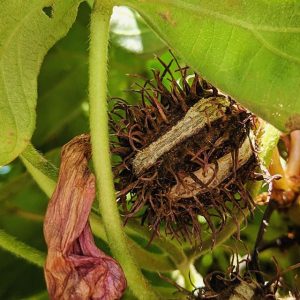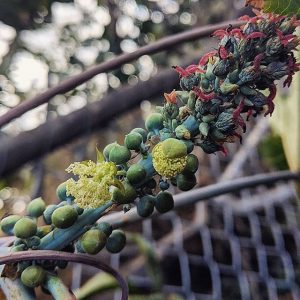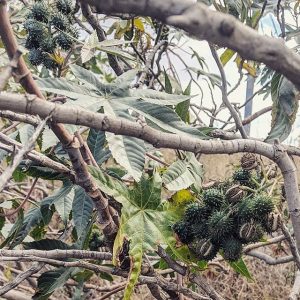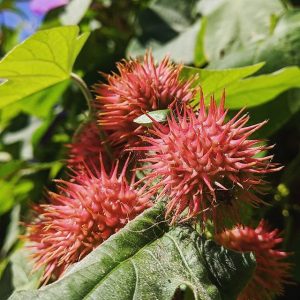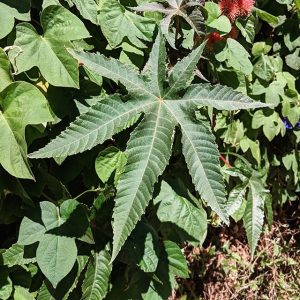Castor Oil Plant (Ricinus communis), a shrub or minor tree native to Eastern Africa. The species has been distributed throughout the global tropics and warm temperate zones primarily as a consequence of its use in Victorian era medicine and as a mechanical lubricant. It has also had recurring, limited popularity as an ornamental foliage plant.
In Australia, Castor Oil Plant was apparently introduced by Colonial Secretary Frederick Goulburn during his appointment to the NSW colony from 1820-1824 (The Australian, 06/02/1830). Subsequently, it was heavily promoted from the 1830s by newspaper writers as a potentially lucrative cash crop. In Queensland, it was reportedly a common weed from at least 1873 (The Queenslander, 19/04/1873), although it only really shows up in botanical records from QLD, NSW and SA from the 1900s. Distributed commercially in Melbourne from 1860, the species is frost-tender and the first records of naturalised plants in Victoria date only to the 1980s. It should be noted however that as a predominantly urban colonist, it is likely that the plant had established colonies in Melbourne years before it was formally recorded.
There are longstanding infestations along the railway embankment running from Richmond to Clifton Hill, comprising both green and red-fruited varieties. Other instances are generally to be found following the city’s other suburban and exurban railway lines and its disturbed waterways, where the plant’s seeds may be spread by construction equipment and floodwaters respectively.
View Original Post on Instagram
Search for information about Ricinus communis in the Flora of Victoria
View information and occurrences of Ricinus communis on the Atlas of Living Australia
